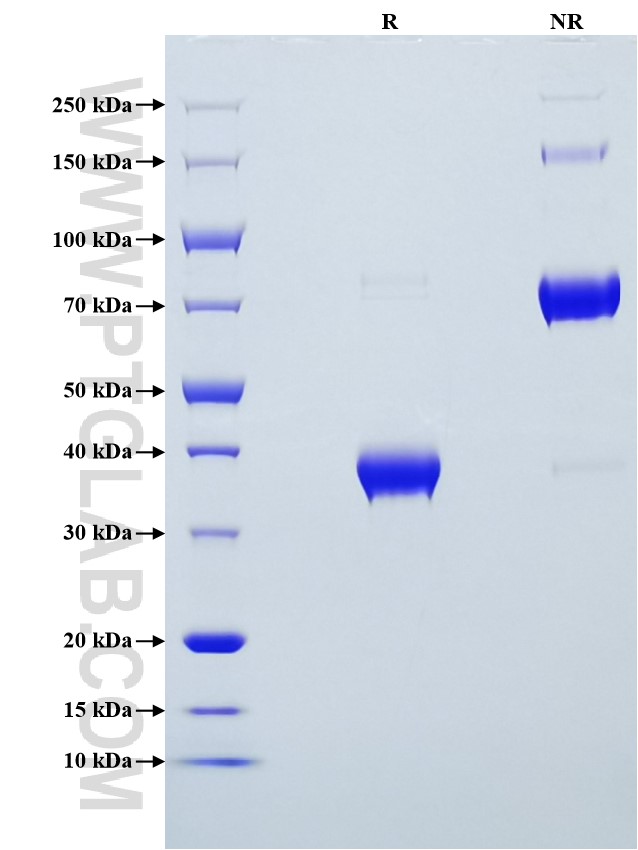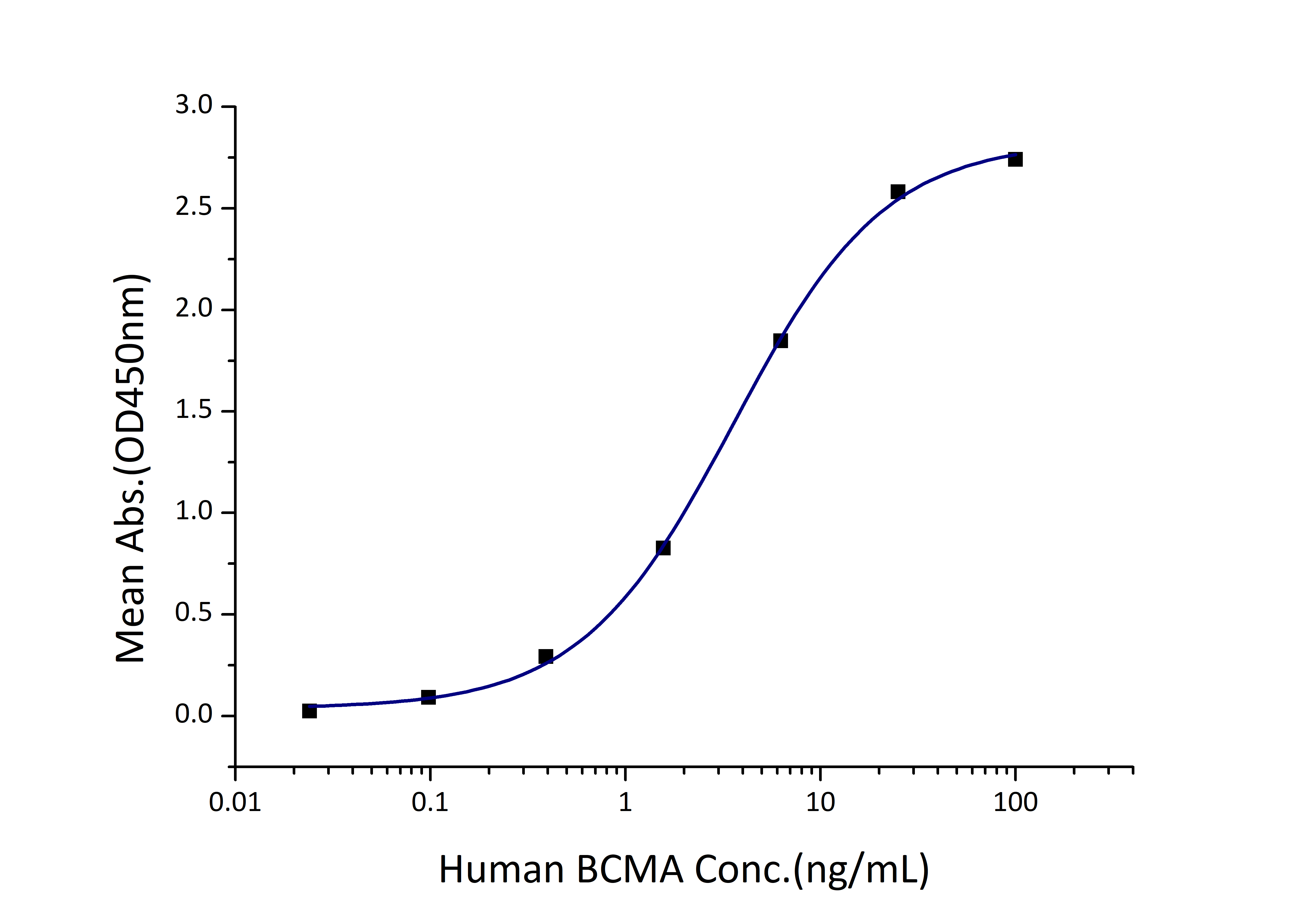Recombinant Human BCMA/TNFRSF17 protein (hFc Tag)
ED50
2-8 ng/mL
Species
Human
Purity
>95 %, SDS-PAGE
GeneID
608
Accession
Q02223
验证数据展示
Technical Specifications
| Purity | >95 %, SDS-PAGE |
| Endotoxin Level | <1.0 EU/μg protein, LAL method |
| Biological Activity |
Immobilized Human BAFF (GST tag) at 1 μg/mL (100 μL/well) can bind Human BCMA (hFc tag) with a linear range of 2-8 ng/mL. |
| Source | HEK293-derived Human BCMA protein Met1-Ala54 (Accession# Q02223) with a human IgG1 Fc tag at the C-terminus. |
| Predicted Molecular Mass | 32.4 kDa |
| SDS-PAGE | 35-40 kDa |
| Formulation | Lyophilized from sterile PBS, pH 7.4. Normally 5% trehalose and 5% mannitol are added as protectants before lyophilization. |
| Reconstitution | Briefly centrifuge the tube before opening. Reconstitute at 0.1-0.5 mg/mL in sterile water. |
| Storage |
It is recommended that the protein be aliquoted for optimal storage. Avoid repeated freeze-thaw cycles.
|
| Shipping | The product is shipped at ambient temperature. Upon receipt, store it immediately at the recommended temperature. |
Background
BCMA (B cell maturation antigen), also known as TNFRSF17, is 20.2-kDa type III transmembrane glycoprotein and is a member of the TNF-receptor superfamily. This receptor is preferentially expressed in mature B lymphocytes and plasma cells, which may be important for B cell development and autoimmune response (PMID: 32943087; 9846698). BCMA has two agonist ligands: a proliferation-inducing ligand (APRIL) and BAFF. When BCMA binds to APRIL, it transmits signals of cell survival and proliferation (PMID: 27127303); when BCMA binds to BAFF, it mediates the activation of NF-kappaB and MAPK8/JNK (PMID: 36140254). It has been found that the overexpression and activation of BCMA are associated with multiple myeloma (MM) in preclinical models and humans, supporting its potential utility as a therapeutic target for MM (PMID: 32055000; 32943087).
References:
1. Bo Yu et al (2020). J Hematol Oncol. Sep 17;13(1):125. 2. C Madry et al (1998). Int Immunol. Nov;10(11):1693-702. 3. Yu-Tzu Tai et al (2016). Blood. Jun 23;127(25):3225-36. 4. Fabrice Jardin (2022). Biomedicines. Sep 1;10(9):2153. 5. Nina Shah et al (2020). Leukemia. Apr;34(4):985-1005.

